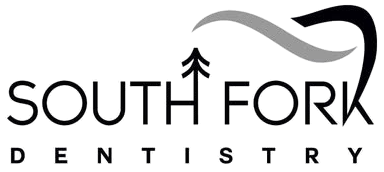Learn How Invisalign Treatment Can Help
If you're dealing with an overbite and are looking for an affordable solution to correct it, you may have come across Invisalign as a potential option. Overbites can cause various dental issues and affect the appearance of your smile. Invisalign is a popular orthodontic treatment that offers a discreet and effective way to fix dental misalignments, including overbites.
In this article, we will delve into the details of how Invisalign can address overbites and provide you with the necessary information to make an informed decision about your orthodontic treatment.
Having a proper understanding of an overbite and its impact on your dental health is crucial before exploring the benefits of Invisalign as a corrective measure.
What is an Overbite?
An overbite is a common dental condition where the upper front teeth significantly overlap the lower front teeth when you close your mouth. This misalignment can occur due to various factors, such as genetics, thumb sucking habits, or jaw abnormalities. While a slight overbite is normal, severe cases can lead to functional and aesthetic concerns.
Understanding Invisalign
Invisalign is a modern orthodontic treatment that employs clear aligners to gradually shift the position of your teeth. These aligners are custom-made to fit snugly over your teeth and exert gentle pressure to move them into the desired alignment. Invisalign is known for its discreet appearance, comfort, and convenience compared to traditional braces.
How does Invisalign work?
Invisalign treatment involves a series of aligners that are worn for approximately two weeks each. The aligners are designed to target specific tooth movements at different stages of the treatment. As you progress through the aligner series, your teeth gradually shift into the desired position. Regular check-ups with your Purcellville Invisalign provider Dr. Singh ensures that your treatment progresses as planned.
Invisalign for Overbite: An Effective Solution
Invisalign has proven to be an effective solution for correcting overbites. The aligners are designed to address various types and severities of overbites, including both horizontal and vertical discrepancies. The treatment focuses on repositioning the teeth and guiding the jaw into a more balanced bite, thereby improving the overall alignment of your smile.
Benefits of Invisalign for Overbite
Choosing Invisalign to fix your overbite comes with several advantages:
- Aesthetics: Invisalign aligners are transparent and nearly invisible, allowing you to straighten your teeth discreetly.
- Removability: Unlike traditional braces, Invisalign aligners can be easily removed, giving you the freedom to enjoy your favorite foods and maintain proper oral hygiene.
- Comfort: Invisalign aligners are made from smooth plastic, minimizing the discomfort associated with metal braces.
- Convenience: With Invisalign, you'll have fewer visits to the orthodontist since you can change your aligners at home every few weeks.
Candidacy for Invisalign Treatment
While Invisalign can effectively treat many cases of overbites, it's essential to consult with an Invisalign provider like Dr. Singh to determine if you're a suitable candidate. Invisalign works well for mild to moderate overbites. Severe cases may require alternative orthodontic interventions.
The Invisalign Process
To initiate your Invisalign journey, you'll first need to schedule a consultation. During this visit, Dr. Singh will evaluate your oral health, discuss your goals, and create a customized treatment plan tailored to your needs. Impressions or digital scans of your teeth will be taken to fabricate your aligners.
Results and timeline
The duration of Invisalign treatment varies depending on the complexity of your overbite. Typically, it can take anywhere from a few months to over a year. Dr. Singh will provide you with a timeline specific to your case, outlining the expected progress and milestones along the way.
Maintaining Results
After completing your Invisalign treatment, it's important to maintain the results achieved. Your orthodontic expert Dr. Singh may recommend retainers to help stabilize your teeth in their new positions. Regular dental check-ups and good oral hygiene practices are also essential for long-term dental health.
Cost of Invisalign Treatment
The cost of Invisalign treatment can vary depending on several factors, including the severity of your overbite, the length of treatment required, and the location of the dental provider. It's best to consult with the expert team at South Fork Dentistry to get an accurate estimate of the cost and discuss any potential financing options available.
Comparing Invisalign with Traditional Braces
Invisalign offers a compelling alternative to traditional braces for correcting overbites. While both methods can effectively treat overbites, Invisalign aligners provide a more discreet and comfortable experience. Traditional braces, on the other hand, may be more suitable for complex cases that require additional control over tooth movements.
Addressing Concerns and Common Questions
Can Invisalign fix severe overbites?
While Invisalign can correct mild to moderate overbites, severe cases may require other orthodontic interventions. Consulting with an Invisalign provider will help determine the most suitable treatment for your specific situation.
Are Invisalign aligners painful to wear?
Invisalign aligners may cause some initial discomfort or pressure as your teeth adjust, but the overall experience is less painful compared to traditional braces. Any discomfort is usually temporary and can be managed with over-the-counter pain relief.
How often should I wear my Invisalign aligners?
For optimal results, it's recommended to wear your Invisalign aligners for 20 to 22 hours a day, removing them only for eating, drinking, brushing, and flossing.
Can I eat and drink with Invisalign aligners?
You should remove your Invisalign aligners before eating or drinking anything other than water to prevent damage and staining. It's important to clean your teeth before reinserting the aligners.
How do I clean my Invisalign aligners?
You can clean your Invisalign aligners by gently brushing them with a soft toothbrush and rinsing them with lukewarm water. Avoid using hot water or abrasive cleaners, as they can damage the aligners.
Schedule an Invisalign Consultation Online
Do your future smile a favor — call South Fork Dentistry to schedule a complimentary Invisalign consultation in Purcellville, today!
